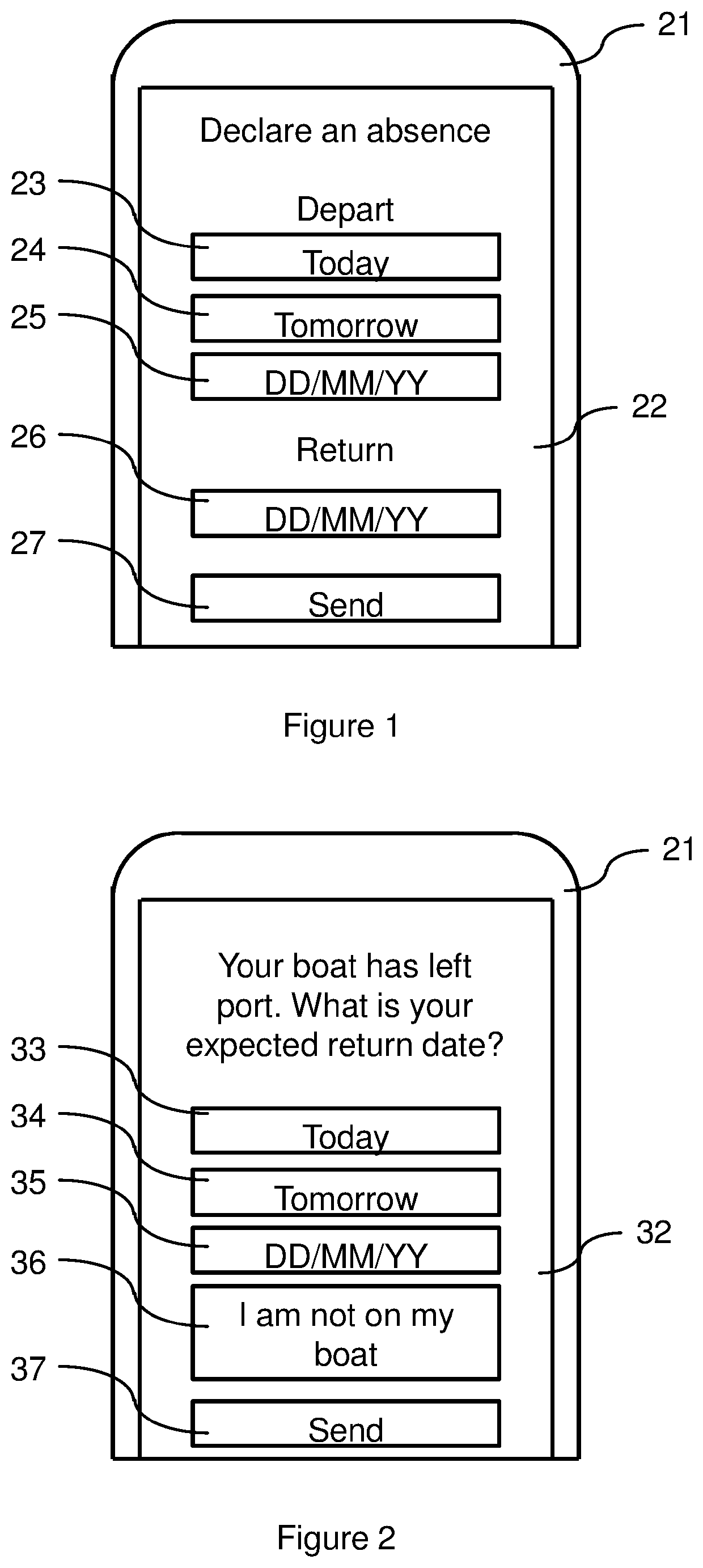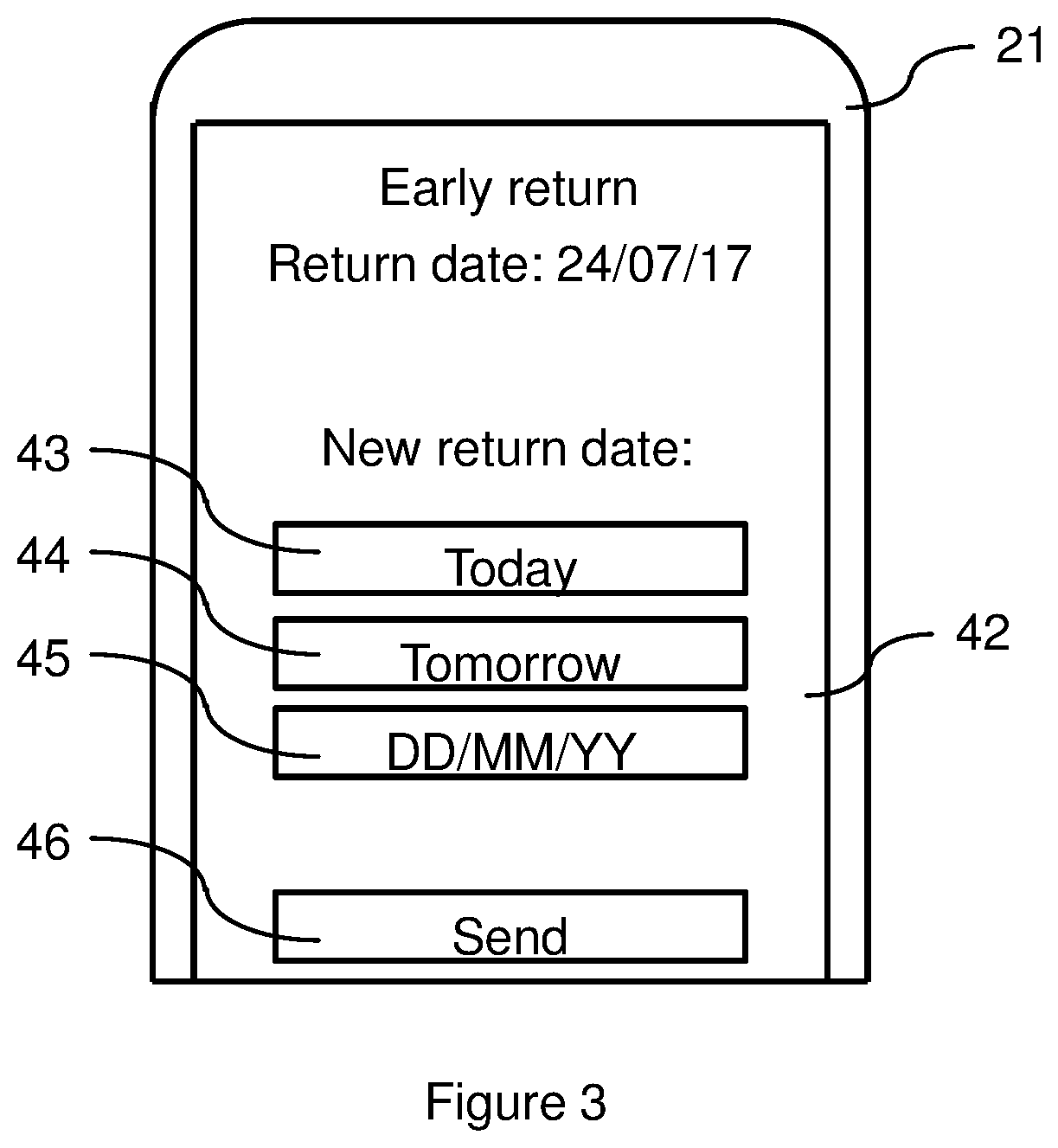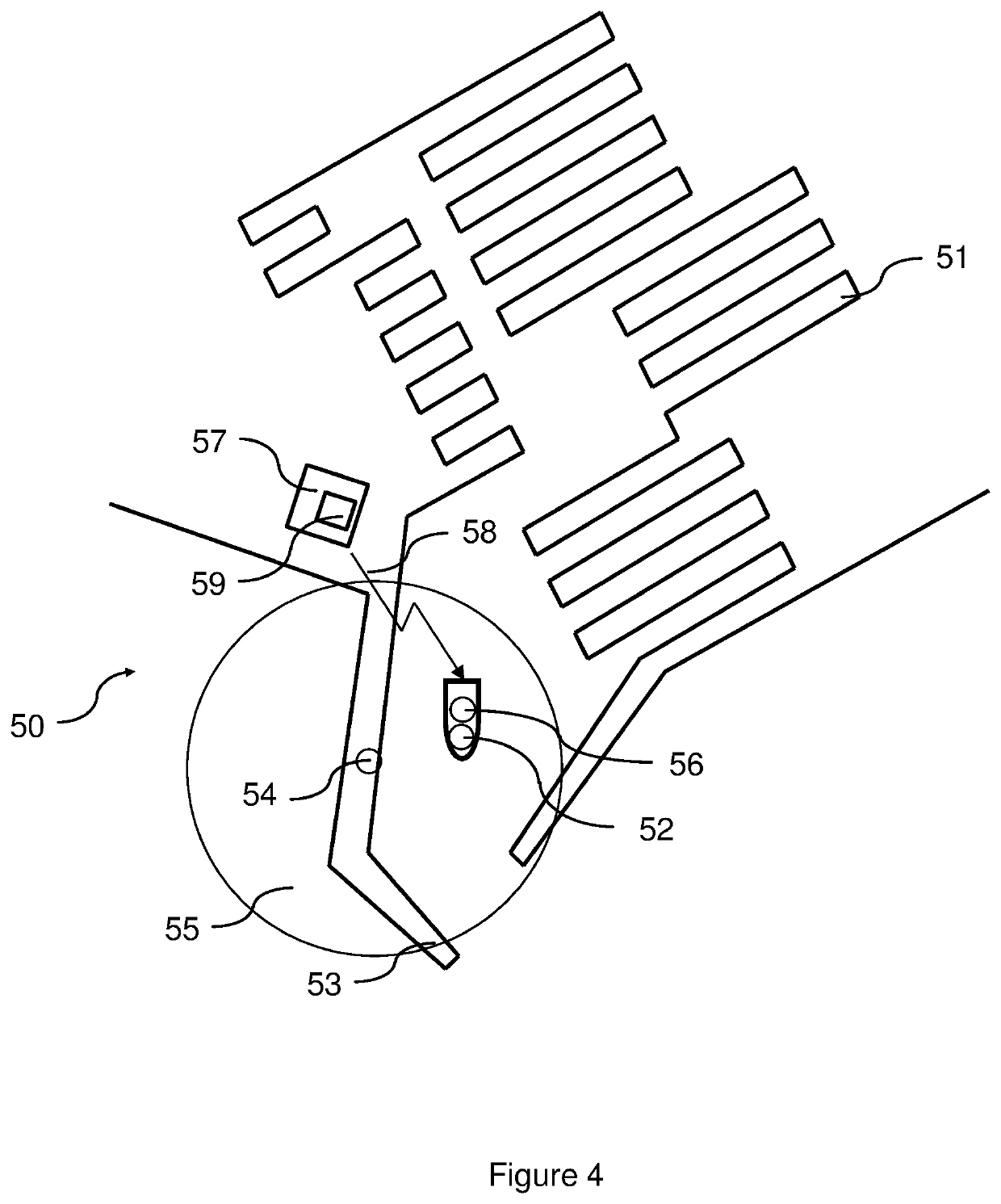Method and device for detecting mooring and monitoring of a navigable area
- Summary
- Abstract
- Description
- Claims
- Application Information
AI Technical Summary
Benefits of technology
Problems solved by technology
Method used
Image
Examples
embodiment 110
[0194]In the embodiment 110 shown in FIG. 10, a mooring ring 112 located at the top of buoy 102 comprises an air chamber equipped with at least one on-board pressure sensor. When a line is knotted on the ring this creates pressure in the ring that is detected, and information on the detection of a boat mooring on the buoy is uploaded as described above.
embodiment 120
[0195]In the embodiment 120 shown in FIG. 11, a metal arc 124 that follows the vertical profile of the buoy 102 is set in rotation relative to the axis of the buoy 102 by a motor 122. The motor 122 regularly makes the arc 124 turn around the buoy 102. If a boat is moored on the arc 124, the latter is held in its rotation, and the presence of a boat is detected by measuring the electrical consumption of the motor 122. If a boat moors under the buoy 102, the arc 104 is also held or slowed during its movement, which enables the boat to be detected.
embodiment 130
[0196]In the embodiment 130 shown in FIG. 12, mooring on the buoy 132 is detected by reflecting acoustic or optical signals via a prism or mirror 136 set in rotation by a motor 138.
[0197]The principle is to use a single sensor for the buoy and a prism or mirror reflecting the wave in several directions successively. Reflection makes it possible to scan a wide field around the buoy 132.
PUM
 Login to View More
Login to View More Abstract
Description
Claims
Application Information
 Login to View More
Login to View More - R&D
- Intellectual Property
- Life Sciences
- Materials
- Tech Scout
- Unparalleled Data Quality
- Higher Quality Content
- 60% Fewer Hallucinations
Browse by: Latest US Patents, China's latest patents, Technical Efficacy Thesaurus, Application Domain, Technology Topic, Popular Technical Reports.
© 2025 PatSnap. All rights reserved.Legal|Privacy policy|Modern Slavery Act Transparency Statement|Sitemap|About US| Contact US: help@patsnap.com



